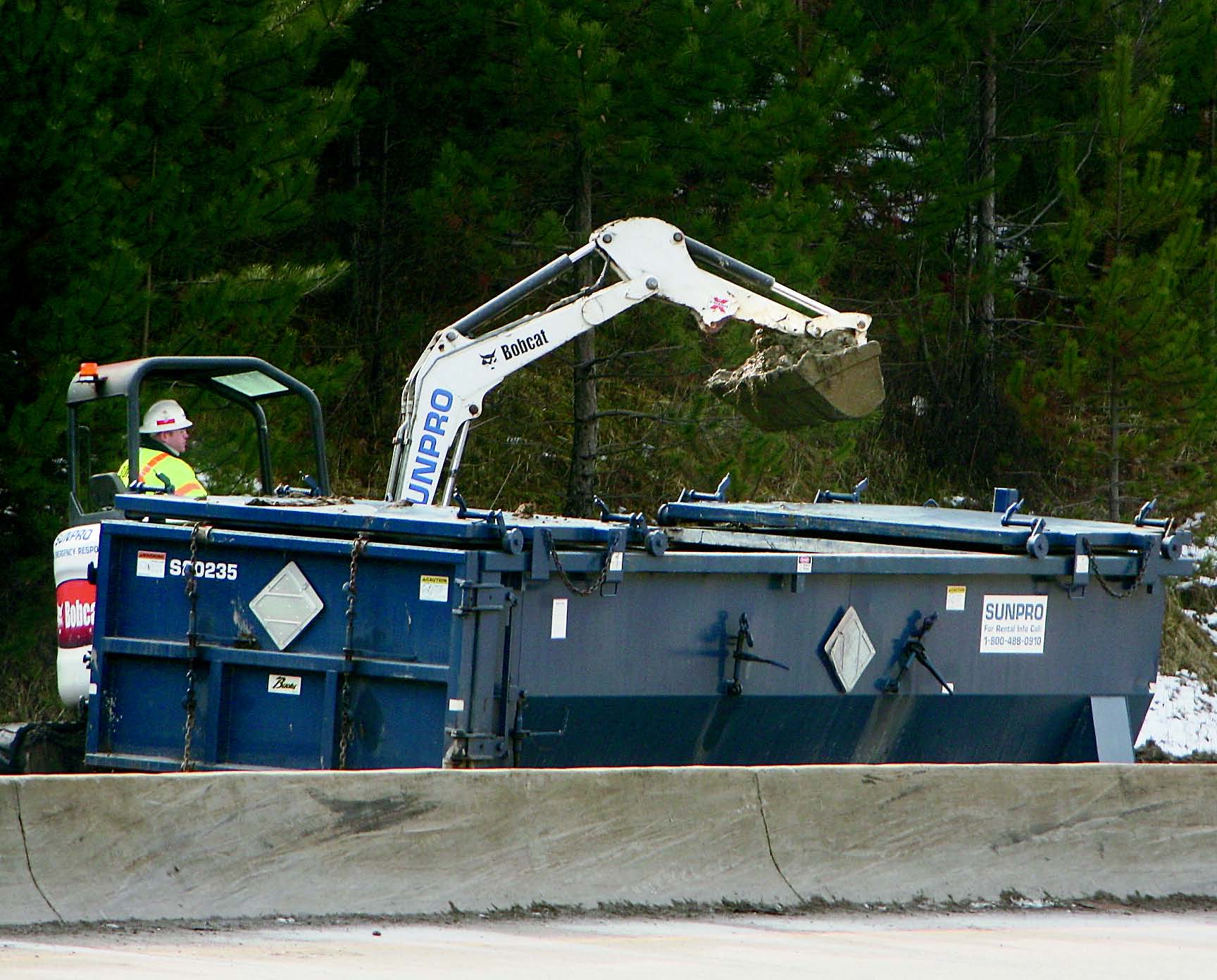Tallying I-680 spill's cleanup costs

Cleanup continued Wednesday, a day after a tanker truck carrying gasoline overturned on the state Route 711 connector on-ramp from Interstate 680, spilling into the city’s sewer system 2,000 of the 8,000 gallons it was carrying.
By Ashley Luthern
aluthern@vindy.com
YOUNGSTOWN
Now that the roads are open again, the city is beginning to put a dollar figure to the cleanup effort of an overturned tanker truck.
Police Chief Rod Foley said he is tallying the amount spent on overtime to handle the spill and traffic, and he estimates the figure to be between $2,000 and $3,000.
Fire Chief John J. O’Neill Jr. did not have a monetary figure available but said the department had about 50 employees respond, including those who were off duty.
The city likely will try to recoup some of those costs from the responsible party.
A tanker truck carrying gasoline overturned about 1:40 p.m. Tuesday on the state Route 711 connector on-ramp from Interstate 680, spilling into the city’s sewer system 2,000 of the 8,000 gallons of gasoline it was carrying. Portions of both highways were closed for hours.
On Wednesday, the I-680 southbound ramp to 711 was still closed and is expected to remain closed through today, said Justin Chesnic, spokesman for Ohio Department of Transportation District 4.
“Everything’s open except that ramp because crews are excavating and clearing the soil and putting new soil down,” Chesnic said.
The overturned truck belongs to Sines Inc. of Painesville, and he driver was Albert Allen Jr., 48, of New Vienna, Ohio, said Youngstown police Detective Sgt. Patricia Garcar.
“He will likely be cited [with] a minor misdemeanor, probably for failure to control,” Garcar said, adding speed was a factor.
Allen was listed in satisfactory condition Wednesday afternoon, said Tina Creighton, a spokeswoman for St. Elizabeth Health Center.
Garcar said the posted speed limit as I-680 weaves through Youngstown is 50 miles per hour because the road curves, making it hard for motorists to see far ahead.
On I-680, when it’s “60 or 65 [miles per hour] and all of a sudden it drops to 50, there’s a reason. Most of our accidents on 680 are on bends and curves and people can’t react to them,” Garcar said.
“People have set in their heads if the freeway says 60, they should go 65 or 70. You have to drive to conditions, and you could still be wrong. You have to slow down,” she said.
Chesnic said ODOT is planning to add caution signs on the 711 connector on-ramp from Interstate 680, either with a speed limit or with the symbol of a truck tipping over.
Both O’Neill and Foley said Tuesday’s response to the spill as well as other accidents in the area is a testament to the ability of various departments to combine resources and work together.
“It was almost like a split effort,” said O’Neill of the accident, which required firefighters to cut the driver out of the truck.
“With the fumes, anything we did could have set off a spark,” he said, adding that could have produced an explosion.
Air Force reservists from the Vienna base covered the scene with foam to try to lower the risk of ignition.
“It was a very, very dangerous operation,” O’Neill said.
The tanker accident was followed quickly by a Division Street house fire, a serious car accident downtown and residents’ calls about fuel smells in homes.
“We were trying to get ahead of the sewer problem that we knew we were going to have,” he said.
The fire chief said that after about 2 a.m. Wednesday, calls relating to fuel in the city’s water system ended.
Foley said Youngstown police had a tremendous task trying to determine where and how to route traffic after various street and freeway closings in the wake of the spill. He said once the kinks were worked out, the department handled the situation smoothly and timely.
The chiefs also credited the many agencies who responded: Ohio State Highway Patrol, Mahoning County Sheriff’s Department, Youngstown State University Police, Liberty Police Department, Austintown police and fire departments, MillCreek MetroParks Police, the Mahoning County HazMat team and the Ohio Environmental Protection Agency.
Contributors: Staff writers Denise Dick
and John W. Goodwin Jr. contributed to this article.
 43
43
